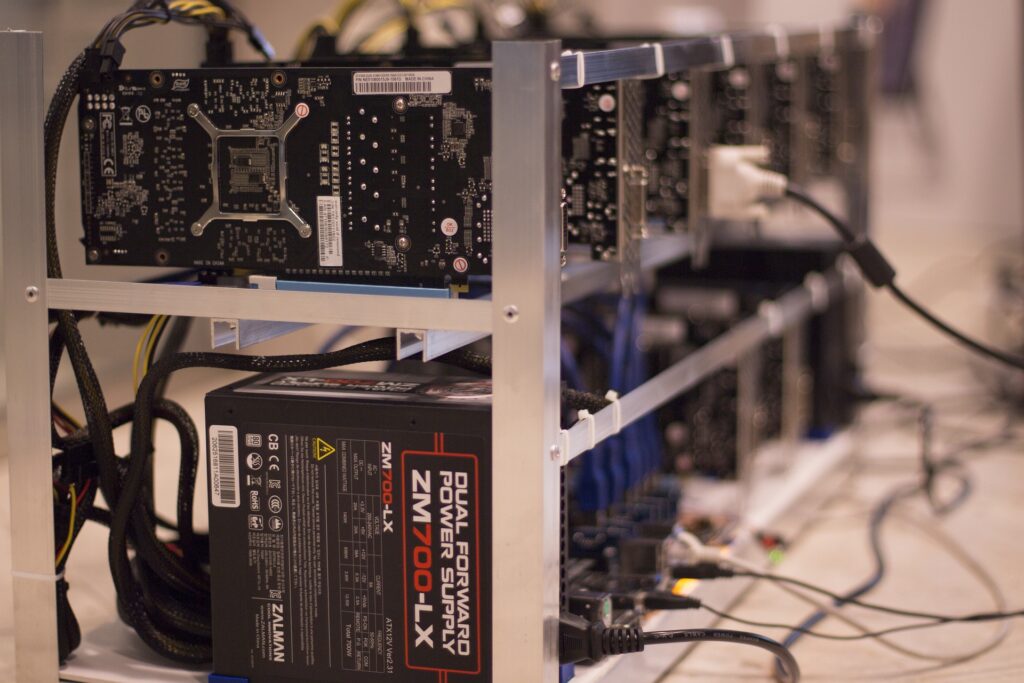Cryptocurrency mining verifies transactions and adds them to the blockchain, the decentralized ledger that is the backbone of most cryptocurrencies. Miners solve complex mathematical puzzles through calculations and are rewarded with newly created cryptocurrency coins or transaction fees.
If you’re interested in mining cryptocurrency, here’s a general overview of the steps involved:
Step 1: Choose the Right Cryptocurrency to Mine The first step in mining cryptocurrency is to decide which cryptocurrency you want to mine. Thousands of cryptocurrencies are available, but not all can be mined. Some popular cryptocurrencies that can be mined include Bitcoin, Ethereum, Litecoin, Monero, and Zcash. Each cryptocurrency has its unique mining requirements, including the type of hardware and software needed and the mining algorithm used.
Step 2: Acquire the Necessary Hardware Mining requires specialized hardware called Application-Specific Integrated Circuits (ASICs) or Graphics Processing Units (GPUs) to solve complex mathematical puzzles. The type of hardware you need depends on the cryptocurrency you want to mine. For example, Bitcoin mining typically requires ASICs, while Ethereum mining can be done with GPUs. You’ll also need a reliable power supply and cooling system, as mining can generate a lot of heat and consume significant electricity.
Step 3: Set Up Mining Software Once you have the necessary hardware, install mining software on your computer or mining rig. The mining software communicates with the cryptocurrency network and helps you connect to a mining pool, a group of miners working together to mine cryptocurrencies more efficiently. Popular mining software includes CGMiner, EasyMiner, and Claymore.
Step 4: Join a Mining Pool Mining as an individual can be challenging due to the increasing difficulty levels and competition. By joining a mining pool, you combine your computing power with other miners to increase your chances of earning rewards by mining cryptocurrencies.
If the pool successfully mines a block, the prizes are distributed among the members based on their contribution to the mining process. Therefore, choosing a reputable mining pool with a good track record and fair reward distribution is essential.
Step 5: Start Mining Once you have set up your mining software and joined a mining pool, you can start mining cryptocurrency. The mining software will use your hardware’s computational power to solve mathematical puzzles and verify transactions. As a reward, you may receive newly created cryptocurrency coins or transaction fees, depending on the cryptocurrency you are mining.
Step 6: Manage Your Mining Operation Mining cryptocurrency requires constant monitoring and management. You must monitor your hardware’s performance, power consumption, and temperatures. You may also need to update and configure your mining software for optimal performance. Additionally, you’ll need to manage your cryptocurrency wallet, where you receive your mining rewards, and decide when and how to sell or trade your mined coins.
Step 7: Staying informed and adapting to cryptocurrency mining is a constantly evolving field and it is important to stay informed of the latest developments and adjust your mining operations accordingly.Cryptocurrency networks regularly adjust the difficulty of mining puzzles to maintain a consistent block creation rate. In addition, the computational power required to mine cryptocurrency can change over time, affecting your mining rewards. Therefore, keeping up with the latest trends and adjusting your mining strategy is essential for long-term success.
In conclusion, mining cryptocurrency requires specialized hardware, software, joining a mining pool, and ongoing management. It’s a complex and resource-intensive process that requires technical expertise, an understanding of the cryptocurrency ecosystem, and careful hardware, software, and rewards management. As with any investment, it’s essential to research, understand the risks and tips, and adapt your mining operation as needed.

